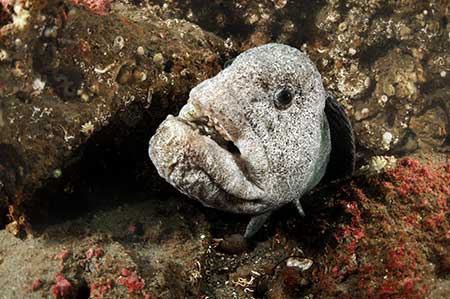

These antlers, which only grow on male moose, can reach up to six feet in width. Moose, whose name comes from a native word, is the largest of the deer family, and stands nearly eight feet tall at the top of their antlers. The farms was established in 2013 so far world's only breeder of Spotted Wolffish. The State animal of Alaska is the moose ( Alces alces ). This is not just an interesting fish or conversation starter, it is a succulent, rich fish that any chef would be proud to serve. The sustainable alternative, Arcticas Spotted Wolffish, is reared in pure arctic water at Aminor’s land-based facilities, with 100% green energy and without any negative impact on the wild populations. Arcticas Spotted Wolffish has a high proportion of the valued Omega-3 fatty acids, and almost no carbohydrates, the Spotted Wolffish is amongst the finest delicacy the ocean has to offer.Īs a result of unregulated fishing and vulnerability due to long reproduction cycles, the Wild Spotted Wolffish is regarded as a threatened species. This makes the Spotted Wolffish an excellent alternative to meat. It also contains B12, which contributes to the production of red blood cells. In addition to being very high in protein, it contains vitamin D, which strengthens and maintains the skeleton. Comparative Toxicogenomics Database.It is not only the texture and consistency that make this a favorite on the dining table.Integrated Taxonomic Information System.Integrated Taxonomic Information System. Its uploader says the species is a wolf eel (Anarrhichthys ocellatus), a fish that is neither a wolf nor an eel but actually a kind of wolffish, a cantankerous-looking family named for their sharp.Integrated Taxonomic Information System. A wolf eel on the seafloor off the coast of Southeast Alaska is captured by a camera on a remote operated vehicle (ROV) during a rockfish survey.Its range extends from Northern Baja California north to the Aleutian Islands, Alaska, and east and south to the Seas of Okhotsk and Japan. Integrated Taxonomic Information System. The wolf-eel is a slow-moving, reclusive fish that hides away near the sea bottom in crevices and caves, often using an individual location as a semi-permanent den.First litter of wild wolf pups born in Mexico. New World wolves and coyotes owe debt to dogs. Our boat the Wolf Eel is fully equipped for your safety and fishing pleasure. What is a wolf eels habitat Juvenile wolf eels mostly spend their time in open waters.


Wolf eels are also seen in Puget Sound, where they are a major attraction for divers. They occur around the Aleutian Islands of Alaska and off the coast of northern California. They swim by making deep S-shapes with their bodies, like a snake moving across the ground. Come join us for a little Alaskan therapy. Wolf eels are present in the Northern Pacific and the Sea of Japan. While these are some general characteristics of wolves, we continue below with different breeds of wolves and their specific information. Wolf-eels live in shallow water as deep as 740 feet (225 m). It needs to be durable to protect them from adverse weather conditions, protect against attack and even help in serving as camouflage. This is due to a reflective membrane on the back of their eyes known as the tapetum lucidum.Ī wolf's fur is dense, thick and coarse. Their sense of smell is keenly developed and their eyes are well-suited to seeing in low-light environments. They can also jump high, something necessary for the often mountainous habitats in which they dwell. They have a very strong musculature with a powerful jaw and very sharp teeth which allow them to hunt and survive in often challenging environments.Ĭertain wolf breeds can reach speeds of up to 40 mph. Depending on the breed of wolf, they are generally large than dogs, weighing between 40 and 80 kilos. The main distribution of wolves in Europe is in Russia and surrounding countries where wolf packs are still found.Īlthough wolves do have many similarities with certain domestic dog breeds, there are also important differences.

This may lead you to ask, ‘where do wolves live now?’ Wolves in the wild are mainly distributed in the United States of America and parts of Europe. The development of civilizations and natural changes in the environment has changed the picture of wolf distribution. In their origins, wolves were distributed over the majority of the world, including the Americas, Asia and Europe. The wolf has existed on earth for approximately 800,000 years.


 0 kommentar(er)
0 kommentar(er)
